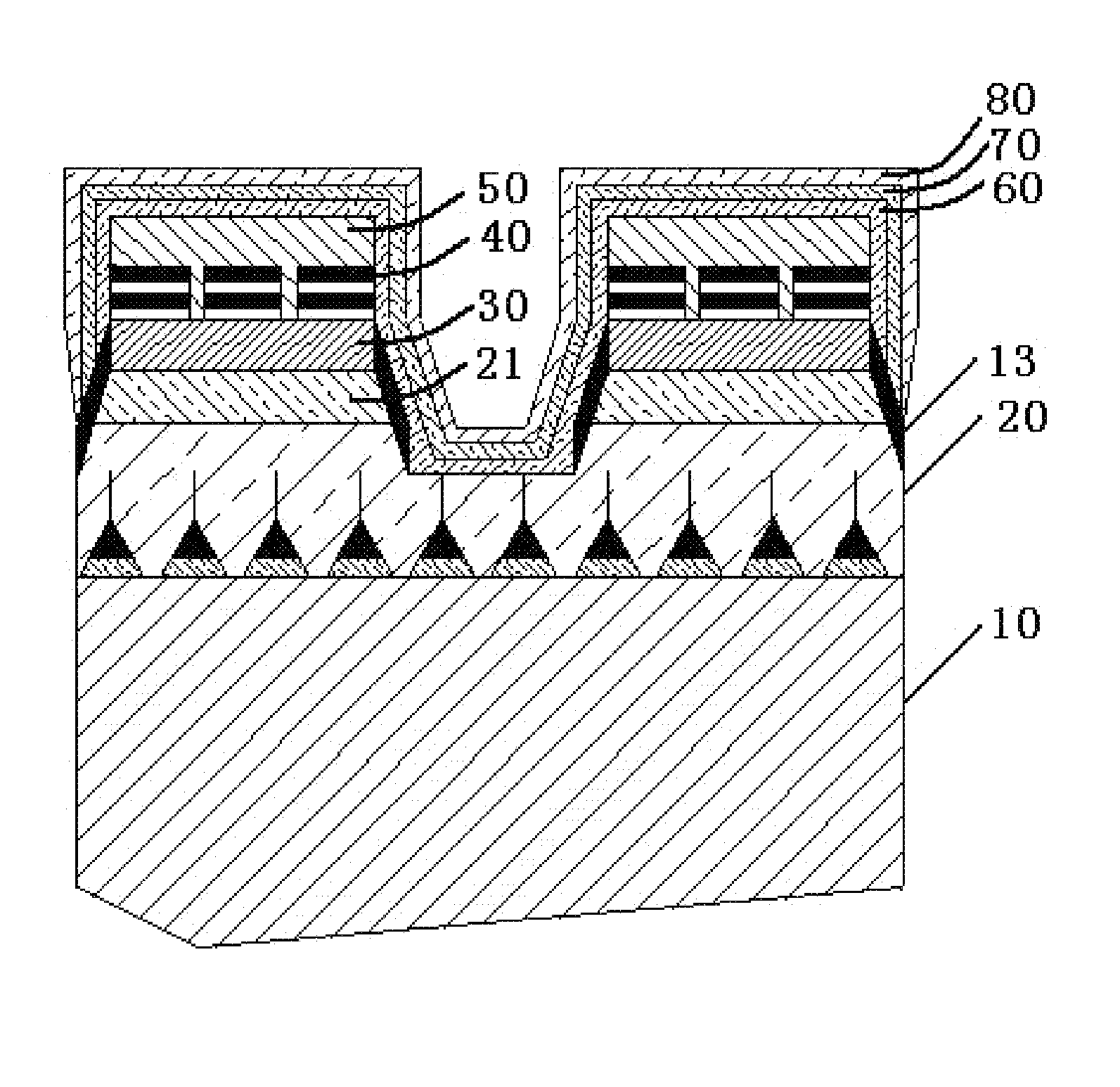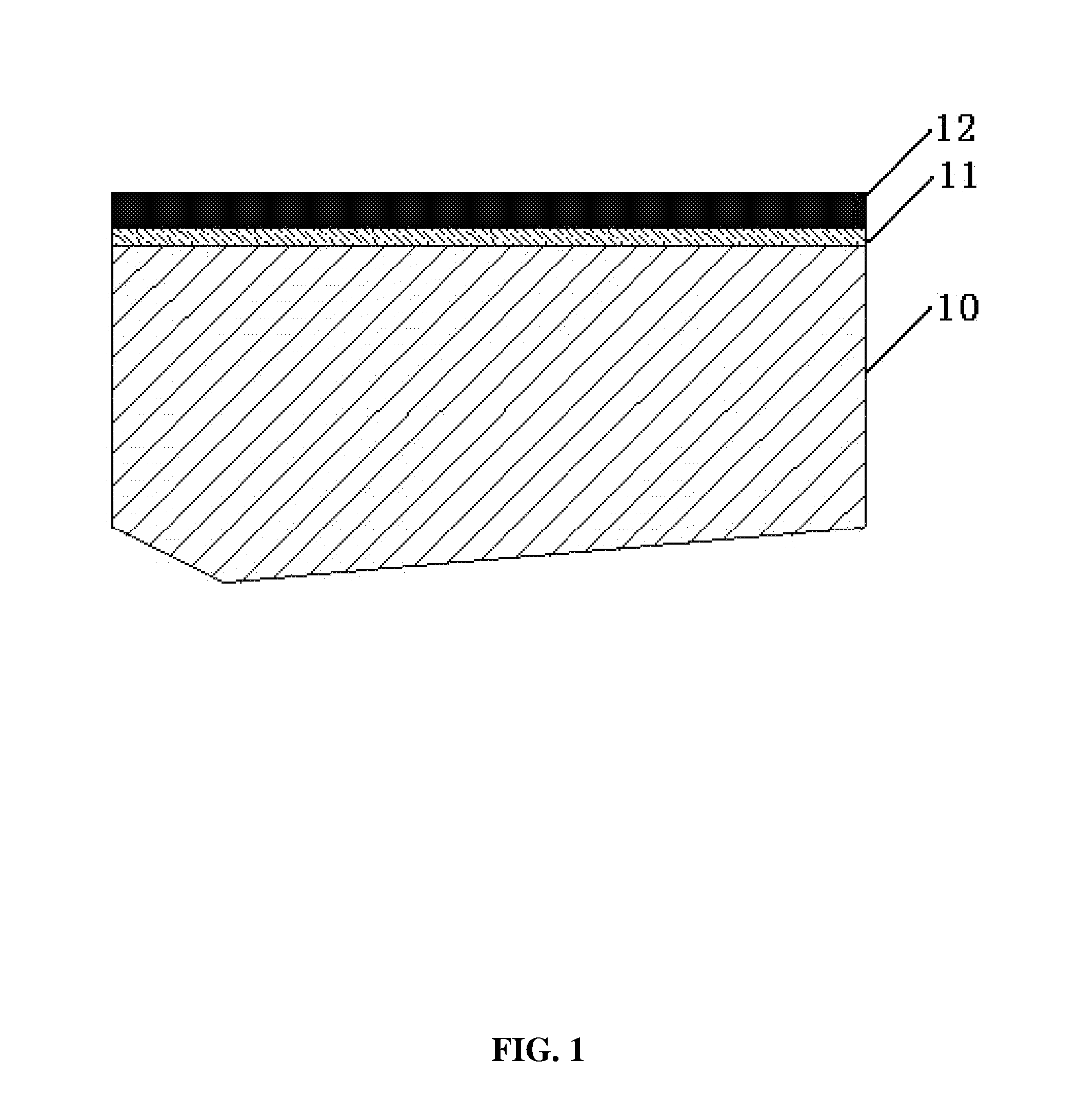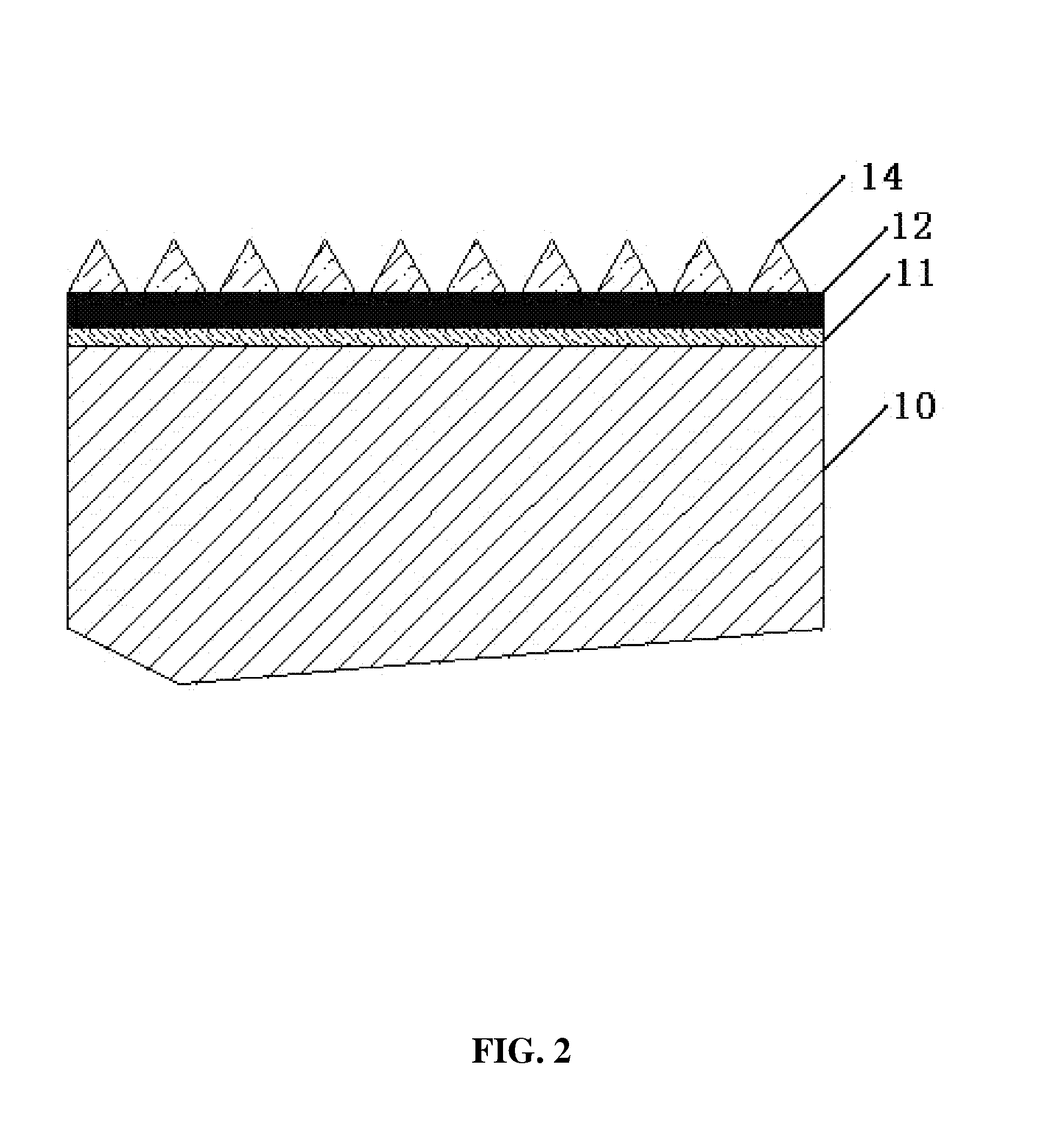Light-emitting diode and method for preparing the same
- Summary
- Abstract
- Description
- Claims
- Application Information
AI Technical Summary
Benefits of technology
Problems solved by technology
Method used
Image
Examples
example 1
[0132]As shown in FIG. 1, a SiO2 film of 7000 angstrom and a SiNx film 12 of 8000 angstrom are respectively deposited on a sapphire substrate 10 by chemical vapor deposition.
[0133]As shown in FIG. 2, a stripe mask pattern is prepared in the SiNx film using photoresists. The section of a stripe pattern is approximately triangle, and the bottom width of the section is 2.4 micron, the height of the section is 2 micron, the distance between two adjacent stripe patterns is 0.6 micron. The vertical view is illustrated in FIG. 3.
[0134]As shown in FIG. 4, the pattern of the photoresists is transferred to the SiNx film and the SiO2 film to form a graphical substrate by dry etching. The section of the stripe pattern is approximately triangle, and the bottom width of the section is 2.5 micron, the height of the section is 1.5 micron. A thickness of the SiO2 film is 0.7 micron, and a thickness of the SiNx film is 0.8 micron.
[0135]As shown in FIG. 5, growing a GaN base light-emitting diode epita...
example 2
[0154]As shown in FIG. 24, a SiO2 film 11 of 10000 angstrom and a SiNx film 12 of 8000 angstrom are respectively deposited on a sapphire substrate 10.
[0155]As shown in FIG. 25, a mesh mask pattern is prepared in the SiNx film using photoresists. The section of the mask is approximately triangle, and the bottom width of the section is 2.4 micron, the height of the section is 2.5 micron, the distance between two adjacent stripe patterns is 0.8 micron. The vertical view is illustrated in FIG. 26.
[0156]As shown in FIG. 27, the pattern of the photoresists is transferred to the SiO2 film and the SiNx film by dry etching to form a mesh pattern. The section of the pattern is approximately triangle, and the bottom width of the section is 2.4 micron, the height of the section is 1.8 micron. A thickness of the SiO2 film is 1.0 micron, and a thickness of the SiNx film is 0.8 micron.
[0157]As shown in FIG. 28, growing a GaN base light-emitting diode epitaxial layer including a N-type layer 20 and...
PUM
 Login to View More
Login to View More Abstract
Description
Claims
Application Information
 Login to View More
Login to View More - R&D
- Intellectual Property
- Life Sciences
- Materials
- Tech Scout
- Unparalleled Data Quality
- Higher Quality Content
- 60% Fewer Hallucinations
Browse by: Latest US Patents, China's latest patents, Technical Efficacy Thesaurus, Application Domain, Technology Topic, Popular Technical Reports.
© 2025 PatSnap. All rights reserved.Legal|Privacy policy|Modern Slavery Act Transparency Statement|Sitemap|About US| Contact US: help@patsnap.com



